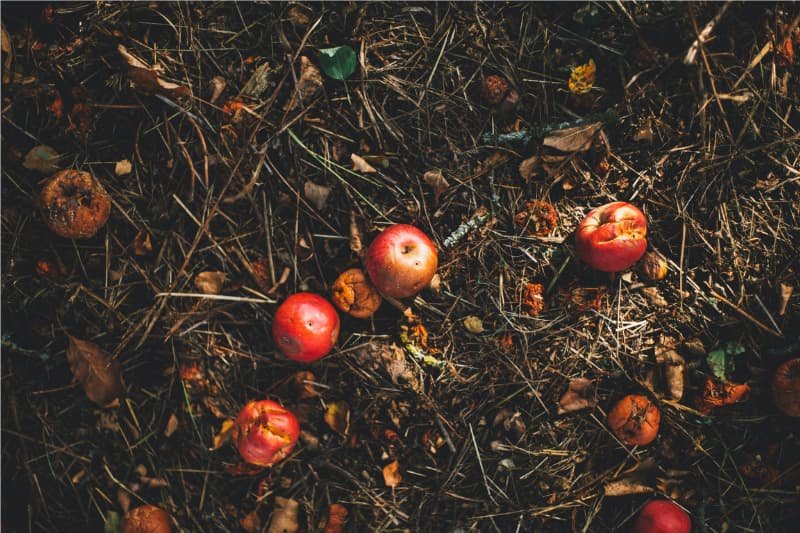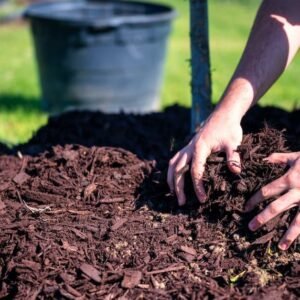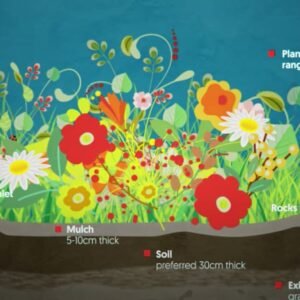
Gardening enthusiasts know the importance of soil health in achieving a flourishing garden. Compost is a nutrient-rich soil amendment that can help improve soil structure, fertility, and water-holding capacity. However, old compost can lose its potency and become less effective in promoting plant growth.
Fortunately, there are several ways to revive old compost and make the most of it in your garden. This article aims to provide readers with ways of what to do with old compost and tips for rejuvenating it. We will explore different creative and sustainable gardening ideas that can help gardeners reuse their old compost and reduce waste.
Whether you’re an experienced gardener or just starting out, these simple ideas will help you revive your garden with old compost.
Short Summary
- Old compost can be revived and reused in many ways, such as using it as mulch, mixing it with potting soil, filling holes in the garden, and creating a bottom layer in containers.
- Proper composting techniques, such as mixing with straw or shredded cardboard, keeping it light, and allowing air to penetrate, can improve nutrient content and effectiveness.
- Using mature compost improves soil structure and promotes healthy root growth, retains moisture, and increases soil’s ability to hold nutrients for better plant growth and higher yields.
- Repurposing waste through sustainable practices like using old compost reduces the need for synthetic fertilizers, pesticides, and herbicides, contributing to the overall sustainability of the soil.
Ways to Use Old Compost

Old compost can be repurposed in various ways to rejuvenate and enrich the soil for better plant growth. One of the most common ways to use old compost is to use it as mulch. The decomposed organic matter in the compost helps retain moisture in the soil, suppresses weed growth, and protects plants from extreme temperatures.
Additionally, mixing old compost with potting soil can increase the nutrient content of the soil, which can promote healthier plant growth. Old compost can also be used to fill holes in the garden or to create a bottom layer in containers, providing an excellent source of nutrients for plants.
Composting techniques play a crucial role in determining the nutrient content and effectiveness of old compost. Proper mixing of the compost with straw or shredded cardboard can help rejuvenate the compost and improve its nutrient content. Additionally, keeping the compost light and allowing air to penetrate can help the compost age and decompose properly.
Mixing the old compost with worms can also help spread the material and improve its nutrient content. Overall, using old compost in various ways can help enrich the soil and promote lush plant growth.
Tips for Rejuvenating
The key to rejuvenating old compost lies in mixing techniques and nutrient content. Properly mixing old compost with straw or shredded cardboard can improve air penetration, which is crucial for the compost to decompose properly and release nutrients to the soil. It is important to keep the compost light and not compact it, as this can hinder the airflow. Mixing in worms can also help spread the material and accelerate the decomposition process. However, it is important to monitor the age and nutrient content of the compost, as this affects its ability to provide nutrients to plants.
To better understand the process of rejuvenating old compost, a table can be used to compare different mixing techniques and their effects on nutrient content. The table can include three columns: Mixing Technique, Nutrient Content, and Result. In the Mixing Technique column, different techniques such as mixing with straw, mixing with shredded cardboard, or mixing with worms can be listed. In the Nutrient Content column, the nutrient levels of the compost before and after mixing can be compared. The Result column can describe the effect of each mixing technique on the compost’s ability to provide nutrients to plants. By using this table, gardeners can determine the best mixing technique for their old compost and ensure that it provides the necessary nutrients for their plants.
Benefits of Using Old Compost

Using mature compost in various ways can provide numerous benefits to the growth and health of plants, as well as contribute to the overall sustainability of the soil.
Old compost is rich in organic matter and nutrients that can help improve soil structure and promote healthy root growth. When added to the soil, it can also help retain moisture and increase the soil’s ability to hold nutrients, which can ultimately lead to better plant growth and higher yields.
In addition to its benefits for plant growth, using old compost is also a sustainable practice that can help reduce waste and promote a healthier environment. By reusing old compost, gardeners can reduce the amount of waste that goes into landfills and produce less greenhouse gas emissions.
Furthermore, the use of old compost can also help reduce the need for synthetic fertilizers, pesticides, and herbicides, which can be harmful to the environment and human health.
Overall, using old compost is an excellent way to promote healthy plant growth while contributing to a more sustainable environment.
Creative and Sustainable Gardening Ideas
Implementing sustainable gardening practices can lead to innovative and resourceful ways to cultivate a healthy and productive garden. Repurposing waste is one of the most effective ways to make use of old compost and reduce waste.
One creative idea is to create a DIY worm tower, which can be made from recycled materials such as PVC pipes or old buckets. The worm tower creates a sustainable way to compost kitchen scraps and other organic waste, while also providing nutrient-rich vermicompost for the garden.
Another way to repurpose old compost is by creating a DIY garden project. For example, old pallets can be transformed into a vertical garden by attaching planters and filling them with old compost. Not only does this project repurpose waste, but it also maximizes space and provides a unique and eye-catching garden feature.
Old compost can also be used to create a DIY potting bench or garden tool storage by mixing it with concrete to create a sturdy and durable material. By implementing these sustainable gardening ideas, old compost can be repurposed in a creative and resourceful way that benefits both the environment and the garden.
FAQs
How long does it take for old compost to rejuvenate?
The time it takes for old compost to rejuvenate depends on various factors, such as its age and nutrient content. Using old compost in new soil can benefit plant growth, and making compost tea can further enhance its nutrient value.
Can old compost be used for indoor plants?
Using old compost for indoor plants has both pros and cons. While it can provide nutrients and improve soil structure, it may also harbor pathogens or pests. To maximize benefits, ensure proper aging and sterilization, and mix with fresh soil.
What is the best way to store old compost?
Proper compost storage is crucial to maintain its quality and nutrients. Store in a dry and cool place to prevent moisture buildup and reduce the likelihood of attracting pests. Compost rejuvenation can be achieved by mixing with straw or shredded cardboard and allowing air to penetrate.
Can old compost attract pests or rodents?
Old compost can attract pests or rodents if not maintained properly. Pest control measures such as covering with a lid or incorporating pest-repelling materials like citrus peels can prevent infestations. Regular compost maintenance like turning and monitoring temperature can also deter pests.
Are there any plants that should not be grown in old compost?
As with any compost, certain plants may not thrive in old compost due to the varying levels of nutrients and pH balance. Alternative compost options should be considered. The benefits of using old compost for soil health include improved structure, water retention, and microbial activity.



